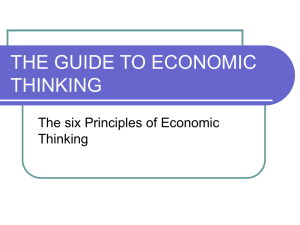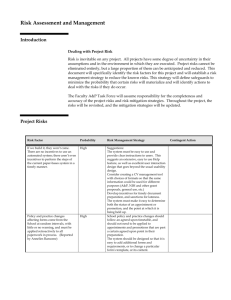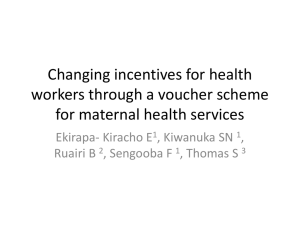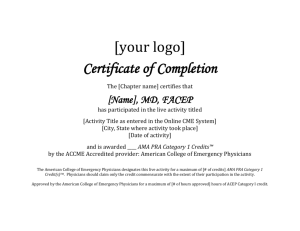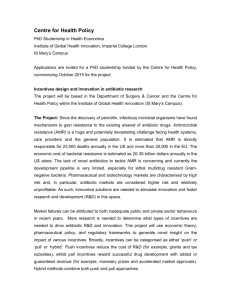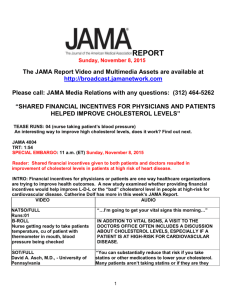Shared Financial Incentives for Physicians and
advertisement
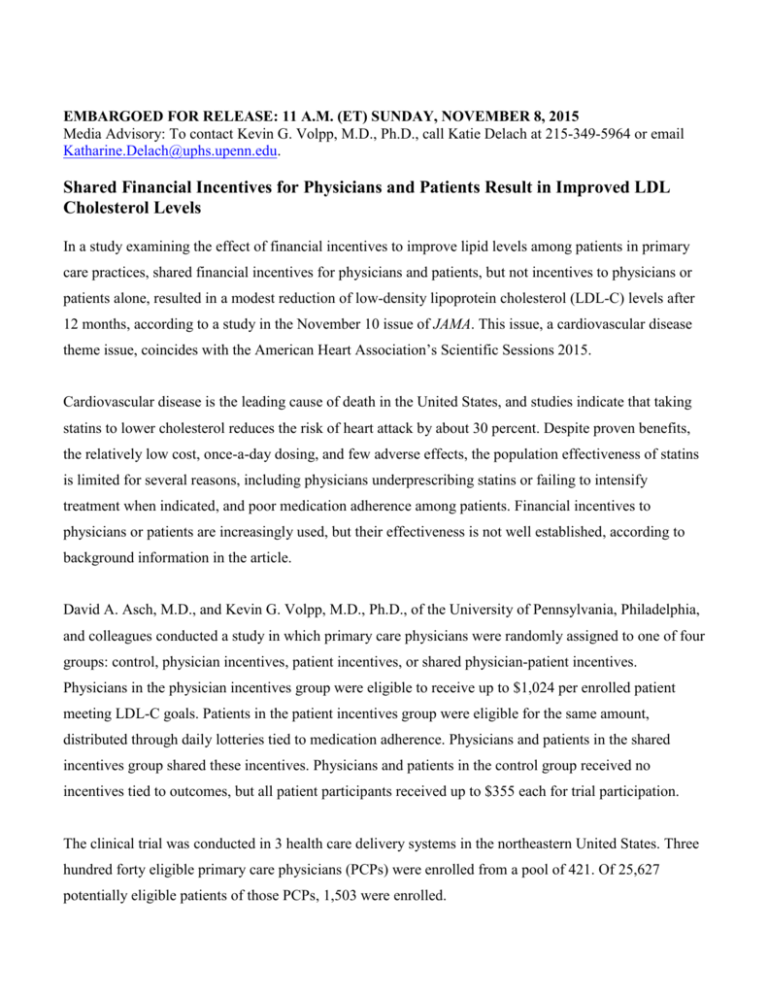
EMBARGOED FOR RELEASE: 11 A.M. (ET) SUNDAY, NOVEMBER 8, 2015 Media Advisory: To contact Kevin G. Volpp, M.D., Ph.D., call Katie Delach at 215-349-5964 or email Katharine.Delach@uphs.upenn.edu. Shared Financial Incentives for Physicians and Patients Result in Improved LDL Cholesterol Levels In a study examining the effect of financial incentives to improve lipid levels among patients in primary care practices, shared financial incentives for physicians and patients, but not incentives to physicians or patients alone, resulted in a modest reduction of low-density lipoprotein cholesterol (LDL-C) levels after 12 months, according to a study in the November 10 issue of JAMA. This issue, a cardiovascular disease theme issue, coincides with the American Heart Association’s Scientific Sessions 2015. Cardiovascular disease is the leading cause of death in the United States, and studies indicate that taking statins to lower cholesterol reduces the risk of heart attack by about 30 percent. Despite proven benefits, the relatively low cost, once-a-day dosing, and few adverse effects, the population effectiveness of statins is limited for several reasons, including physicians underprescribing statins or failing to intensify treatment when indicated, and poor medication adherence among patients. Financial incentives to physicians or patients are increasingly used, but their effectiveness is not well established, according to background information in the article. David A. Asch, M.D., and Kevin G. Volpp, M.D., Ph.D., of the University of Pennsylvania, Philadelphia, and colleagues conducted a study in which primary care physicians were randomly assigned to one of four groups: control, physician incentives, patient incentives, or shared physician-patient incentives. Physicians in the physician incentives group were eligible to receive up to $1,024 per enrolled patient meeting LDL-C goals. Patients in the patient incentives group were eligible for the same amount, distributed through daily lotteries tied to medication adherence. Physicians and patients in the shared incentives group shared these incentives. Physicians and patients in the control group received no incentives tied to outcomes, but all patient participants received up to $355 each for trial participation. The clinical trial was conducted in 3 health care delivery systems in the northeastern United States. Three hundred forty eligible primary care physicians (PCPs) were enrolled from a pool of 421. Of 25,627 potentially eligible patients of those PCPs, 1,503 were enrolled. After 12 months, the average reduction in LDL-C levels for patients was: 25.1 mg/dL for patients in the control group; 25.1 mg/dL for patients in the patient incentives group; 27.9 mg/dL for patients in the physician incentives group; 33.6 mg/dL for patients in the shared physician-patient incentives group. Only patients in the shared physician-patient incentives group achieved reductions in LDL-C levels statistically different from those in the control group (difference of 8.5 mg/dl). “This outcome is supported by the finding that 49 percent of the patients in the shared patient and physician incentive group achieved the LDL-C goal in comparison with 36 percent to 40 percent in the other 3 groups. The superiority of a shared approach makes sense because success at LDL-C reduction is likely to be driven by both provision of medication by physicians and patient adherence to that medication. Consistent with this hypothesis, patients in the shared group were more likely to receive medication intensification and to adhere to medication use than patients in other groups.” The author note that the reduction in LDL-C levels achieved by the patients in the shared physicianpatient incentives group were modest, and that further information is needed to understand whether this approach represents good value. (doi:10.1001/jama.2015.14850; Available pre-embargo to the media at http:/media.jamanetwork.com) Editor’s Note: This study received support from the National Institute on Aging. Please see the article for additional information, including other authors, author contributions and affiliations, financial disclosures, etc. ###
